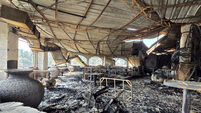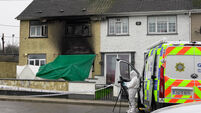At least 86 killed by tsunami
A two-metre-high tsunami crashed into beach resorts and fishing villages on Indonesia’s Java island today, killing at least 86 people, leaving scores more missing and sending thousands fleeing to higher ground, witnesses, officials, and media reports said.
Regional agencies issued bulletins saying a magnitude 7.7 earthquake that had struck beneath the Indian Ocean was strong enough to send a killer wave hurtling toward Indonesia, the country worst hit by the 2004 tsunami.
But the alerts did not reach the victims because the densely populated island - where a powerful quake killed thousands just seven weeks ago – does not have a tsunami warning system.
The hardest-hit area appeared to be Pangandaran, an idyllic beach resort long popular with local and foreign tourists, where witnesses said people shouted “tsunami, tsunami,” and climbed trees or crowded inland mosques as the wave approached.
“All the houses are destroyed along the beach,” a woman who identified herself only as Teti told el-Shinta radio. ”Small hotels are completely destroyed and at least one restaurant was washed away.”
The extent of damage further up the coast was not immediately clear, with some roads blocked and power and phone lines cut. But casualties were reported at several spots along some 110 miles of beach affected.
The Indonesian Red Cross, police and district officials said at least 82 people were killed, most in Pangandaran and nearby Cilacap. El-Shinta radio added another four to the toll.
“We are still evacuating areas and cross-checking data,” the Red Cross’ Arifin Muhadi said, adding that at least 77 people were missing.
There were no immediately reports of foreign deaths, but at least one Swedish man was being treated for injuries at a local hospital and his two sons, ages 5 and 10, were missing, said Jan Janonius, a Swedish Foreign Ministry spokesman.
The family was vacationing at Pangandaran, he said, refusing to provide more details.
Java island was unaffected by the 2004 tsunami that killed at least 131,000 people on Indonesia’s westernmost island of Sumatra, but thousands of residents and tourists fled to higher ground amid fears that a wave may have been heading their way.
One witness told the el-Shinta he saw the water withdraw 500 metres from the beach a half hour before the giant wave smashed to shore, a phenomena typical in a tsunami.
“I could see fish jumping around on the ocean floor,” said the witness, who gave only the name Miswan. “Later I saw a wave like a black wall.”
The mid-afternoon quake that spawned the tsunami was centred 150 miles south-west of Java and 30 miles beneath the ocean floor, the US Geological Survey said. It was followed by a series of strong aftershocks.
The earthquake caused buildings to sway as far off as the capital, Jakarta, where some office workers crowded into elevators and streamed onto the streets.
The Pacific Tsunami Warning Centre and Japan’s Meteorological Agency issued warnings saying there could be a tsunami in the Indian Ocean, and waves measuring 10 to 20cms also were recorded on Indonesia’s Bali island and near Australia’s Coco Islands.
Indonesia is prone to earthquakes because of its location on the so-called Pacific “Ring of Fire,” an arc of volcanoes and fault lines encircling the Pacific Basin.
The 2004 tsunami killed at least 216,000 people in a dozen countries.
On May 27, a magnitude 5.9 earthquake devastated a large swath of Java Island, killing more than 5,800 people, but areas along the southern coast were not affected.














